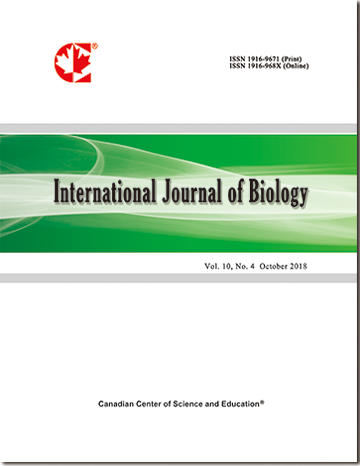Rickettsia spp. and its Effects on the Physiology and Behaviour of Dermacentor Variabilis
- Amal El Nabbout
- James Kho
- Vett Lloyd
- Tatiana Rossolimo
Abstract
The genus Rickettsia is home to a number of species of endobacteria that infect vertebrates as well as invertebrates, some of these species being pathogenic. Rickettsia bacteria are transmitted to mammals by Dermacentor variabilis ticks in North America, but while pathogenic effects in mammals have been well described, the effect of the bacteria in ticks is less well explored. Experiments were performed to determine how the physiology and behaviour of the Dermacentor variabilis (Say) (Arachnida: Ixodidae) are affected by infection with Rickettsia bacteria. DNA analysis was used to determine the presence of Rickettsia genus in ticks. The supercooling point (SCP), fat content, and temperature preference were compared between infected and uninfected ticks. Infection incidence with Rickettsia spp. was 45.8% in males, 46.4% in unengorged females and 48.3 % in engorged females. Eggs were more resistant to freezing, followed by larvae, then adult ticks. There was no change in the temperature preference between males vs. engorged females, and females vs. engorged females. The presence of Rickettsia spp. did not significantly affect supercooling point, fat content and water content. However, there was a difference between infected and uninfected females, both engorged and unengorged, in temperature preference. We conclude that in both, engorged and unengorged female ticks, Rickettsia bacteria affect their behaviour but not physiology.
- Full Text:
 PDF
PDF
- DOI:10.5539/ijb.v9n2p39
Journal Metrics
h-index (December 2021 ): 37
i10-index (December 2021 ): 149
h5-index (December 2021 ): N/A
h5-median (December 2021 ): N/A
Index
- ACNP
- AGRICOLA
- BASE (Bielefeld Academic Search Engine)
- CAB Abstracts
- CiteFactor
- CNKI Scholar
- CrossRef
- DTU Library
- Elektronische Zeitschriftenbibliothek (EZB)
- Excellence in Research for Australia (ERA)
- Google Scholar
- Infotrieve
- LIVIVO (ZB MED)
- LOCKSS
- Max Planck Institutes
- MIAR
- PKP Open Archives Harvester
- Qualis/CAPES
- ResearchGate
- ROAD
- SafetyLit
- SHERPA/RoMEO
- Technische Informationsbibliothek (TIB)
- Universe Digital Library
- WorldCat
Contact
- Ryan JonesEditorial Assistant
- ijb@ccsenet.org
